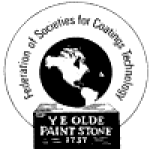- Industry: Paints & varnishes
- Number of terms: 70
- Number of blossaries: 0
- Company Profile:
Represents chemists, chemical engineers, technologists, and supervisory production personnel in the decorative and protective coatings industry and allied industries.
(1) Stable dispersion of a polymeric substance in an essentially aqueous medium. (2) Fine dispersion of rubber or resin, natural or synthetic, in water; the synthetic is made by emulsion polymerization. (Strictly speaking, after polymerization a latex is a solid dispersed in water, and therefore is not an emulsion. Latex and emulsion are often used synonymously in the paint industry.)
Industry:
Water-thinned paint made with synthetic binders such as polyvinyl acetate or acrylic resins. In contrast to oil-based paint, latex paint dries fast, flows smoothly, and cleans up easily with water. High-performance latex paints contain 100% acrylic resins.
Industry:
The ability of a coating to form a smooth film without brush marks appearing. Higher quality latex paint has superior leveling ability.
Industry:
A phenomenon exhibited by a pair of colors which match under one or more sets of conditions, be they real or calculated. Metamerism should not be confused with "flair" or color constancy, terms which apply to the apparent color change exhibited by a single color when the spectral distribution of the light source is changed or when the angle of illumination or viewing is changed.
Industry:
Chemical agent in quality paint that retards mildew, a common problem in humid climates.
Industry:
The detachment of paint from the surface in ribbons or sheets. Like flaking, the result of loss of adhesion.
Industry:
Finely ground, natural or synthetic, inorganic or organic, insoluble dispersed particles (powder) which, when dispersed in a liquid vehicle to make paint, may provide, in addition to color, many of the essential properties of the paint: opacity, hardness, durability, and corrosion resistance. The term is used to include extenders, as well as white or color pigments. The distinction between powders which are pigments and those which are dyes is generally considered to be on the basis of solubility. Pigments being insoluble and dispersed in the material, dyes being soluble or in solution when used.
Industry:
This binder is produced from petrochemical feedstocks. The binder's polymer particles are small in size and carried in water. The binder polymers and water mix is known as emulsion.
Industry:
A colorless, thermoplastic, water soluble, resinous high polymer derived from the polymerization of vinyl acetate with a catalyst; used as a latex binder in certain, generally lower quality water-base coatings.
Industry:
The ratio of the volume of pigment to the volume of total nonvolatile material (i.e., pigment and binder) present in a coating. The figure is usually expressed as a percentage.
Industry:
